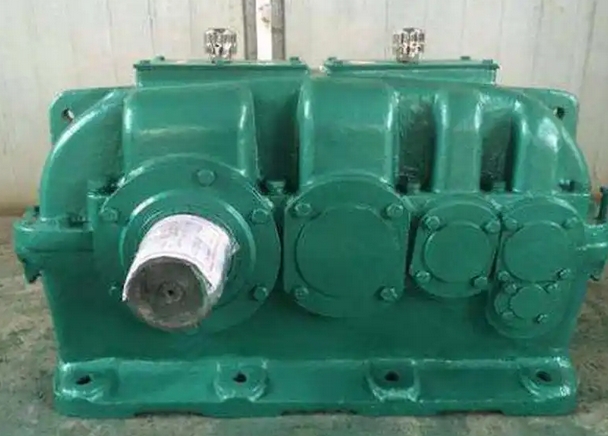How to solve the problem of excessive vibration in the housing of the ZFY800-400-I hardened gear reducer.
To solve the problem of excessive vibration in the ZFY800-400-I gearbox body, we can start from the following aspects:
1. Check the installation status
Foundation and Connection: Check if the foundation is stable, if there are any settlement, cracks, or other issues, if the anchor bolts are loose, tighten the loose bolts, replace damaged bolts in a timely manner, and if there are any problems with the foundation, repair or redo it.

Installation accuracy: Confirm whether the installation of the reducer, motor, and load equipment is concentric and aligned, and whether the installation of the coupling meets the requirements. When the alignment is not correct, the installation position should be readjusted to ensure that the axis alignment is within the specified range. Damaged coupling components should be replaced.
2. Check the transmission components
Gear condition: Check the wear and tooth surface damage of the gear. If there are problems such as excessive wear, tooth surface pitting, bonding, or tooth breakage, the gear should be replaced in a timely manner; At the same time, check whether the meshing clearance of the gears is suitable. If it is not suitable, adjust it to ensure the accuracy of gear meshing.
Bearing status: Check whether the bearing is worn, fatigued, damaged, etc. If so, it needs to be replaced in a timely manner; Adjust the installation clearance of the bearings to ensure it is within a reasonable range and avoid vibration caused by excessive or insufficient clearance.
Axis condition: Check if the axis is deformed or bent, and if the key connections are loose. The deformed shaft needs to be corrected or replaced, and loose keys need to be reinstalled or replaced.
3. Check the lubrication system
Oil quality and level: Check the quality of the lubricating oil. If the oil quality deteriorates, becomes contaminated, emulsifies, etc., it is necessary to replace the lubricating oil in a timely manner; At the same time, confirm whether the oil level is within the normal range. If the oil level is too low, add lubricating oil, and if it is too high, drain the oil to the appropriate position.
Lubrication method: Check whether the lubrication method is correct, whether the lubrication pipeline is blocked, leaking oil, etc. If there are problems, repair or clear the pipeline in a timely manner to ensure that each lubrication point can receive good lubrication.
4. Analyze load and operating conditions
Load condition: Check if the load is too large or uneven, exceeding the bearing capacity of the gearbox. If so, adjust the load or replace it with a larger gearbox; At the same time, frequent impact and fluctuation of the load can be avoided by adding buffering devices and other methods.
Operating parameters: Confirm whether the operating speed is stable and close to the critical speed of the gearbox. If the speed fluctuates greatly, check the motor and control system to ensure stable speed; If approaching the critical speed, adjust the operating speed to avoid the critical speed zone.
5. Detecting electrical systems
Power supply voltage and frequency: Check whether the power supply voltage is stable, whether the voltage deviation is within the allowable range, and whether the frequency meets the requirements of the motor and reducer. When the voltage is unstable or the frequency is abnormal, the power supply system should be checked to identify the problem and solve it.

